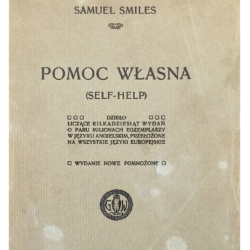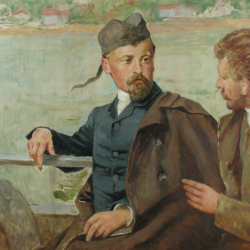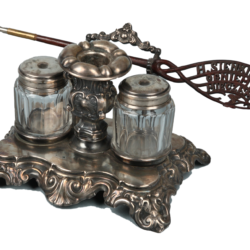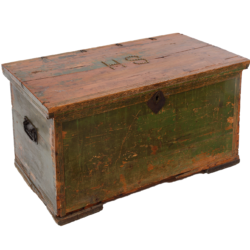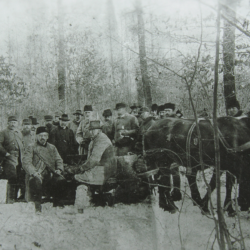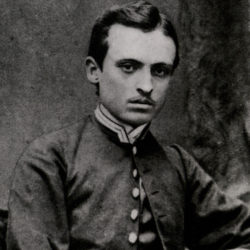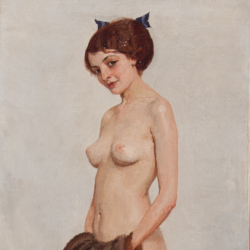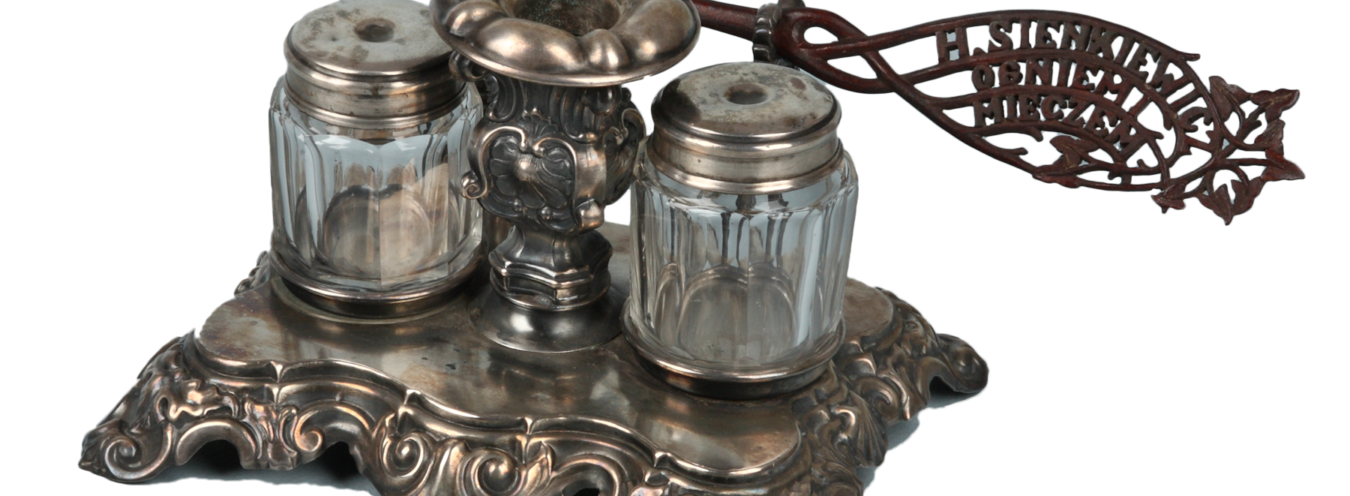
The Source… and the Fib
We often juxtapose Listy z podróży do Ameryki (Letters from the Journey to America) with correspondence, and in this way, we divide the image of America and the information concerning Sienkiewicz’s stay in America into the private sphere and official sphere, retrieving the data and treating the text as a bibliographic source. We need to remember, however, that this correspondence is not really private but rather half-private since some fragments were not ‘only read out but also published. One example might be “List Litwosa ‘Z drugiej półkuli’” (Litwos’ Letter “From the Other Hemisphere”) “to one of our [i.e. Gazeta Polska’s (Polish Newspaper) – A.B.] collaborators”, re-printed as a supplement to Szkice amerykańskie (American Sketches) in the edition of Dzieła (The Works), edited by Julian Krzyżanowski, or the reservations made in the letter to Edward Le as of November 1876:
In the correspondence that I am going to post in a couple of days, I am going to describe all these events and many others; that is why I wouldn’t like this letter, or its fragments, to be published, since it would be repetitive.[1]
Undoubtedly, the autobiographical threads are strongly connected with self-creation, both in the case of the correspondence that was written to be published as well as in the case of epistolography. Still, “the American experience” should not be perceived as a holistic and profound experience of America, where Sienkiewicz spent two years (from March 1876 to March 1878). His trip from one coast to the other encompassed only the northern states; that is why Sienkiewicz equates “American” with “Yank”, and for him, a Californian squatter is the embodiment of the American ideal.
Did the author of Listy z podróży do Ameryki [Letters from the Trip to America] fib? This slightly provocative question remains especially valid today, in light of the discussion regarding the limits of the so-called literary reportage and the freedom of artistic expression of a journalist[2]. Working on the border of non-fiction and belles-lettres offers the author a tremendous opportunity for artistic fulfillment, simultaneously raising serious doubts in the minds of the readers and the critiques. “Thus a general and more basic question is: how much freedom is the journalist allowed? Because the increase in ‘capacity’ and the ‘enrichment’ of literary reportage, the ‘improvement of the reality’, the crossing of genre borders, and encroaching upon the area of fiction makes journalism pay a high price, an unpleasant drawback – the loss of credibility.”[3]We have to stress, however, that in the times of Sienkiewicz, the pioneer era of press reportage, this issue did not raise much controversy, and the author himself did not feel embarrassed as a result of embellishing his experiences in accordance with the needs of the text that he was writing; consequently, he felt no need to conceal his methods. The correspondence is testament to his ability to distinguish “artistic truth” from “real-life truth” – Listy z podróży do Ameryki (Letters from the Trip to America) are a thought-out literary creation, according to what the author wrote to Julian Horain in 1876:
Do you think that this ingenious young man gradually develops, and simultaneously lies so much that the paper blushes in embarrassment? What is more, I can tell you that in the next letters, he will be lying twice as much: you will be reading the descriptions of grasslands, bears, hunts and accidents that he suffered. In brief, a genuine romance, where, apart from the geographical and natural backdrop, everything was made up – only slightly related to the truth. It should not seem strange, as everybody does that.[4]
The young correspondent presents his writing method to his publisher in such an open and humorous way (the letter to Edward Le as of November 1876):
After all – by God! – I have learnt a bit how to deal with Indians, and since everyone can speak Spanish, I can talk to them, and I can negotiate. In the end, they taught me many war and hunting tricks: “to see and to hear in the grassland”, to hide, and to read tracks the way one reads letters in a book.
On the basis of little cues, such as bent grass, the trace of a moccasin on the sand, the hoof print, the remains of a bonfire, or food, I can easily and conceitedly conclude – as writers typically do – who was passing by, where they went, how many people were there, etc.
Naturally, I often fall for their fibs, which is relatively easy, since they cannot be verified.[5]
Jerzy Krzyżanowski claims that the entire hunting trip to Wyoming, which was described in three different texts (in Szkice Amerykańskie XII-XIV [American Sketches XII-XIV]), was, in fact, a skillful hoax, humbug, an attractive story made up to compensate the feeling of frustration and the overwhelming internal crisis experienced by the writer in 1877, after the fall of the of the “artistic phalanstère” in Anaheim, California and after parting with Helena Modrzejewska, which was caused by a serious conflict with her husband[6]. Obviously, neither this fact nor the members of the idyllic Californian community, who were framed out of the picture in the texts written for publishing, were mentioned in the pages of Listy z podróży do Ameryki [Letters from the Trip to America]. In the anonymous provincial nobleman who traveled with the main protagonist from Warsaw through Berlin, London and across the Atlantic – on board the ship “Germanicus” – we can recognize a slightly caricatured portrayal of Juliusz Sypniewski. Still, apart from several mentions of Horain and the paeans sung to the glory of the acting career of Modrzejewska, we learn nothing about the numerous Poles living in San Francisco (for instance, captain Rudolf Korwin Piotrowski and Franciszek Wojciechowski, who were later occasionally mentioned as the models for some protagonists of Trylogia [Trilogy]) or about members of the Anaheim community (the Sypniewski family, Karol Chłapowski, Stanisław Witkiewicz, Adam Chmielowski, Lucjan Paprocki). The immigrant community was described from the outside (the way it was described later in two lectures on Polish settlements in America), as seen with the eyes of a visitor who immersed himself in the complete strangeness of America, staying in touch only with the locals (Max Neblung, Jack Harrison, the Pleasants, the Indian guide Pero, etc.). If we were to believe Listy z podróży… [Letters from the Trip …], the main activities that the young man from Warsaw engaged in included writing and hunting. As Ryszard Koziołek notes[7], “the same hand holds the pen and the weapon”; that is why “the accident with the hand” – which was bit and scratched by a shot cougar – causes delays in sending the correspondence commissioned by “Gazeta Polska”, and spoils the author’s handwriting for a significant period of time. And in accordance with the spirit of this correspondence, a skillful hand keeps “the real man” alive by letting him obtain food thanks to a well-aimed shot and by letting him gain financial remuneration for the vivid description of these shots.
Yet, the private letters reveal some other aspects of life in the Californian manor: “I know a certain columnist who currently spreads manure on the fields, but it’s all right!”[8] Farming, hunting and the appeals of the idyllic life, associated by Sienkiewicz with the use of burdock leaves for toilet purposes, quickly bored the writer[9] since – as he concluded in a letter to his publisher – “I could not spend my whole life in the woods.”[10]
Przypisy
- H. Sienkiewicz, Listy [Letters], vol. 3, part 2, edited, annotated, and with an introduction by M. Bokszczanin. Warsaw 2007, pp. 454-455.
- This phenomenon was usually observed only in the 20th century, when journalistic genres and conventions had already been formed. The so-called New Journalism, also known as “faction”, was born in the 1960s and 70s, and was popularized thanks to the work of the authors such as: Bruce Chatwin, Truman Capote, Norman Mailer, Hunter S. Thompson, Tom Wolfe, and – in Poland – Ryszard Kapuściński. This form of “creative non-fiction writing” aims to combine ‘the functions of the traditional reportage with the writing techniques used in fiction” (A. Domosławski, Kapuściński non-fiction, Warsaw 2010, p.389).
- Ibidem, p. 438.
- H. Sienkiewicz, Dzieła [The Works], ed. J. Krzyżanowski, vol. 55, Warsaw 1951, p. 222, emphasis. – A.B.
- H. Sienkiewicz, Listy [Letters], vol. III, part 2, edited, annotated, and with an introduction by M. Bokszczanin. Warsaw 2007, pp. 449–450, emphasis – A.B.
- J. R. Krzyżanowski, “Sienkiewicz w Wyoming, czyli “trick or trip”?[Sienkiewicz in Wyoming – trick or trip?], Pamiętnik Literacki [Literary Diary] 1996, issue 4, p. 72. The rumors of Sienkiewicz’s affair with Modrzejewska appeared already in 1874, during his short engagement to Maria Keller. “Warm” feelings must have filled the star’s husband even earlier since “the third one” wrote in his letter to Julian Horain: “Finally, I know a certain Karol, who is constantly dreaming to learn how to castrate, and he deprived all male chickens of everything he could cut away, as a result of which all hens hate him to such an extent that he cannot even peacefully go to the toilet.” (H. Sienkiewicz, Listy [Letters], vol. 1, part 2, introduction and biographical notes of the addressees by J. Krzyżanowski, annotated by M.Bokszczanin, Warsaw 1977, p. 381). It is via Horain that Sienkiewicz later passed his letters to Modrzejewska (ibidem, pp. 389-390).
- R. Koziołek, Ciała Sienkiewicza. Studia o płci i przemocy [The Bodies of Sienkiewicz. The Studies on Gender and Violence], Katowice 2009, p. 411.
- H. Sienkiewicz, Listy [Letters], vol. 1, part. 2, op. cit., p. 380.
- ibidem, p. 387.
- H. Sienkiewicz, Listy [Letters], vol. 3, part. 2, op. cit., p. 467.

